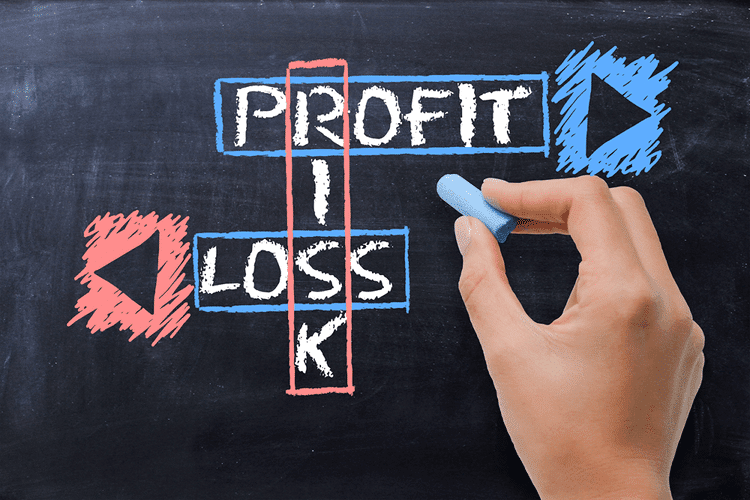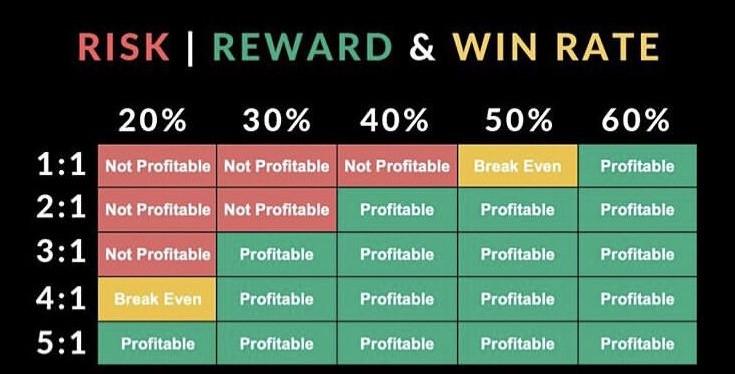Which is more important in forex, win rate, or risk-to-reward? Everyone would love to have a loss-free, ‘Holy Grail’ trading system with guaranteed wins. Unfortunately, such a dream is not possible in any financial market. Trading with a so-called high win rate isn’t indicative of good performance over time if the risk to reward is out of place.
Overview

In the now-famous 1989 trading book, ‘Market Wizards: Interviews With Top Traders,’ the American author, Jack Schwager, interviewed legendary trader Bill Lipschutz.
To paraphrase some of the powerful words he spoke, Lipschutz emphasized how you cannot be a consistently winning trader if you bank on being right more than half the time, that you need to find a way to be profitable with a 30% win rate. The only approach to achieving this sentiment is through risk-to-reward.
Is there a special relationship between the win rate and risk-to-reward in forex? This article will attempt to answer this question and essentially give compelling reasons why the concept of risk-to-reward is far more crucial than the win rate.
How can the win rate be ‘manipulated’?
Using any analytics platform, a strategy can easily show a high win rate and resulting profit over a specific period. Yet, this summary does not indicate a trader will remain consistently profitable in the long run.
The win rate can be a ‘manipulated’ metric by having a ‘skewed’ RR (risk-to-reward) ratio where a trader’s stop loss is significantly larger than their profit target. Naturally, the price will take longer to reach their stop.
For example, a trader can trade a set-up where they use a 100 pip stop loss and decide to exit when the position has moved 20 pips in their favor. Even if the price goes against them for extended periods, they are less likely to lose often since they can withstand negative gains over time.
If they performed the same action over five positions and the price reached their take-profit (TP) each time, an analytics platform would reflect a 100% win rate. However, in the long run, this strategy will have tiny winners that cannot adequately cover their losses, resulting in a negative expectancy.
Understanding ranges
Typically, the market moves in a specific range over a defined period, a trait easily exploitable through using a wider stop loss. For example, if the average true range (ATR) of EUR/USD on the daily chart is 80 pips, placing a position at any time with a 100 pip stop makes it less likely to be kicked out of a trade in most cases.
Effectively, a trader can stay in a losing position for as long as several weeks. It makes sense for a position trader to use a stop loss this wide as they may look for a 500-pip TP, a more favorable RR. However, traders with shorter time horizons for their positions should understand they cannot use bigger stops if their targets are tinier.
The relationship between the stop loss against the win rate and risk-to-reward
We’ve just established any trader can possess an impressive win rate by merely having a far-reaching stop loss and a much smaller TP (which does not produce positive expectancy long term). It’s crucial to understand traders can use wider stop losses as long as their profit targets are greater than this distance (as will be exemplified below).
This observation leads to another question worth considering, is there a relationship between the stop loss against the win rate and risk to reward? Let’s look at examples of two traders (call them trader A and trader B).
Trader A
After successfully and thoroughly forward-testing their strategy, trader A sees they have an 80% win rate. Let’s assume that, on average, they trade with a 50 pip stop (risking $100) and a profit target also of 50 pips ($100), which is effectively a 1:1 RR ratio.
After five positions, they win four (80%) where price reaches their 50-pip target. The summary of their positions is as follows:
1 loss = $100
4 wins = ($100 X 4 = $400) / 200 pips
Total profit = $300 (400-100)
Trader B
Now let’s imagine trader B has a 40% win rate but with different profit and loss metrics where, on average, they trade with a 25 pip (risking $100) and a 125-pip TP of ($500), a remarkable 1:5 RR. After five positions, they win two (40%) where the price reaches their 125-pip target. The summary of their positions is as follows:
3 losses = $300
2 wins = ($500 X 2 = $1000) / 250 pips
Total profit = $700 (1000-300)
Despite trader B statistically having more losses than trader A, through an impressive RR, their gains are higher even with a lower win rate. Of course, the above scenario is a hypothetical example in limited sample size, though it should illustrate perfectly why the win rate isn’t as important as it may seem to many.
It is essential to ensure profits are marginally superior to the losses. A trading system can sustain a reasonable win rate over the long haul but can fail in the wrong hands if losses aren’t managed to consistent amounts.
But wait, the win rate can still be more crucial for SOME traders

In the end, traders usually have to choose between having a higher win rate and lower RR or a lower win rate and higher RR. Generally, intraday traders need higher win rates if they are happy at taking small profits regularly in line with their constant trade frequency.
Some traders can perform very well with lower RR (even lower than 1:1, albeit not without its challenges) with a confident, above-average win rate. However, it would be challenging to achieve a great RR AND win rate for numerous reasons.
Firstly, the actual probabilities of any position are always 50%; it can either make someone lose money or not. Secondly, using unrealistically tight stops to increase the RR is often not recommended nor practical as the price will easily ‘knock’ one out of trades regularly, and this also escalates the position size unnecessarily.
Therefore, one needs to choose between the two but should also not fuss over the win rate as this can foster unnecessary perfectionism.
Conclusion
Many people’s expectations, especially newbies, lean towards trading strategies or systems that don’t or hardly ever lose, which is far from reality. Even if there were a strategy that can perform with very little failure, that doesn’t guarantee dependable profits over time.
In contrast, risk-to-reward is probably every trader’s edge in a chaotic financial market and is what will determine whether someone can make money consistently or not.